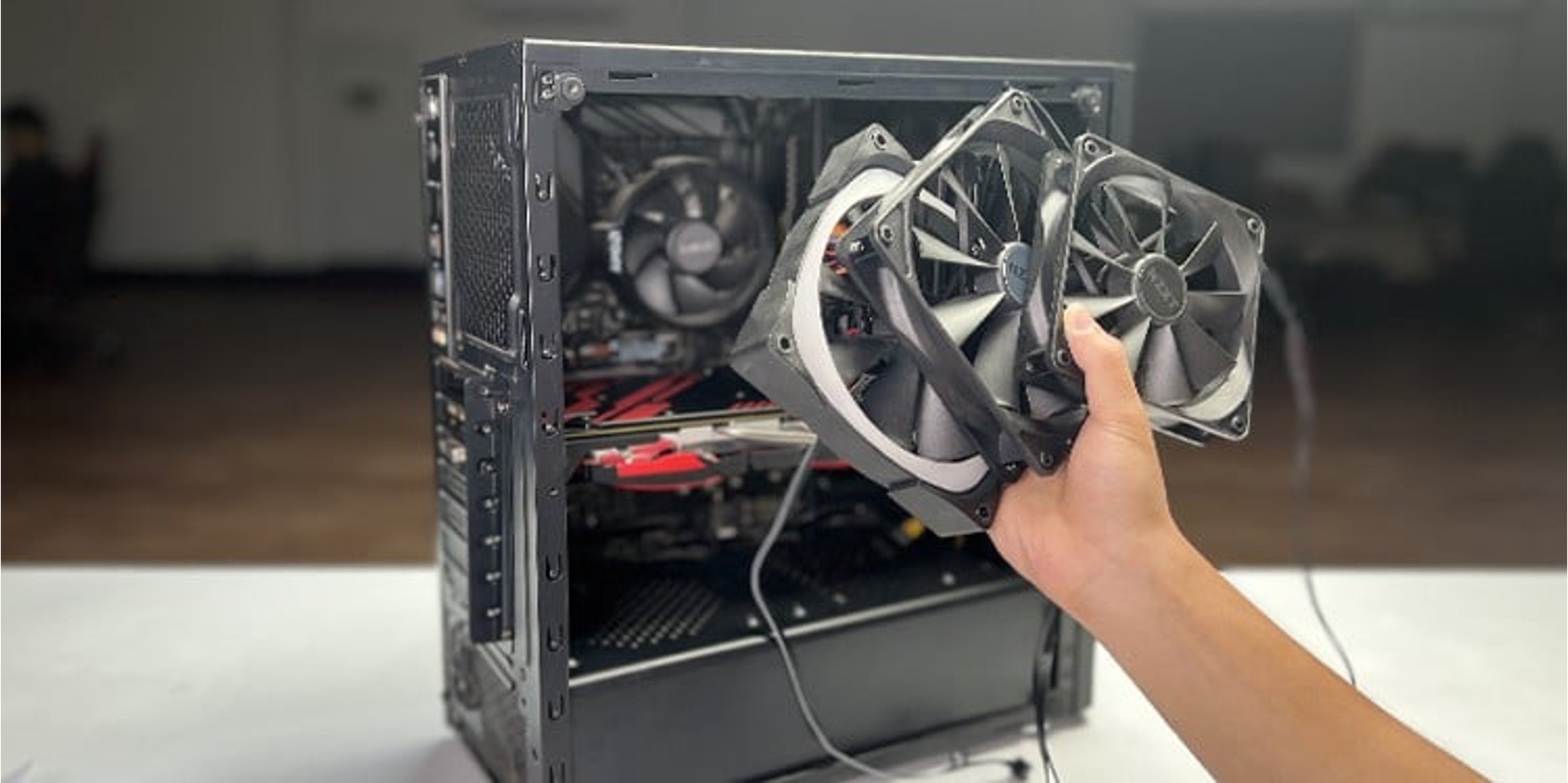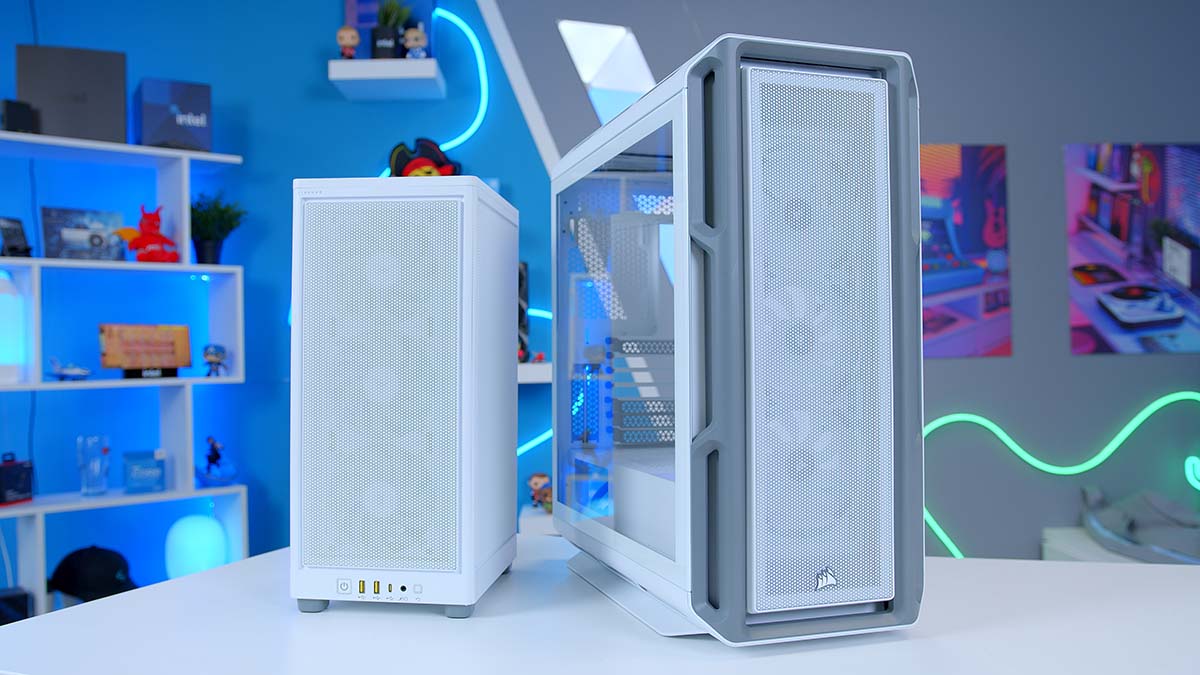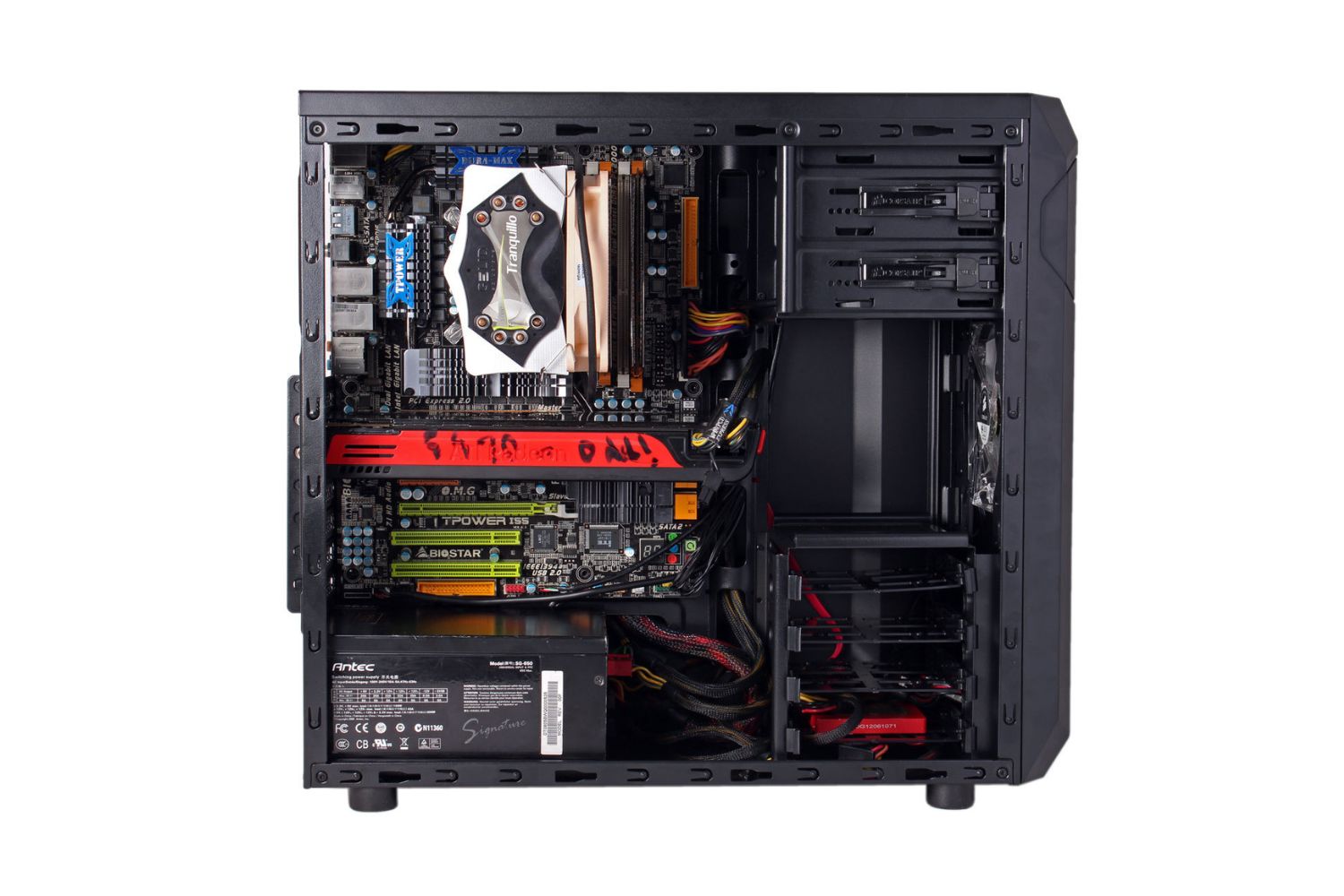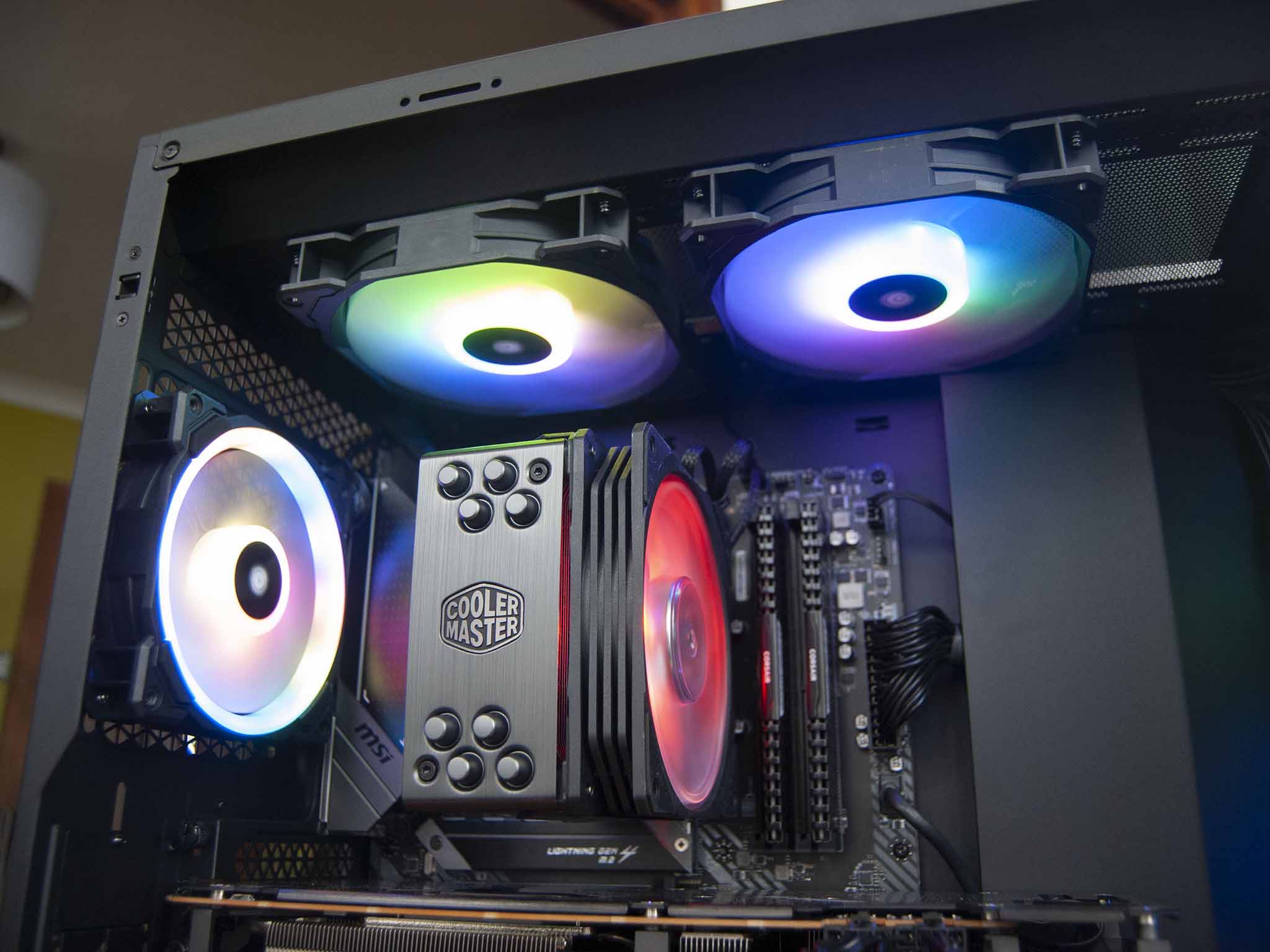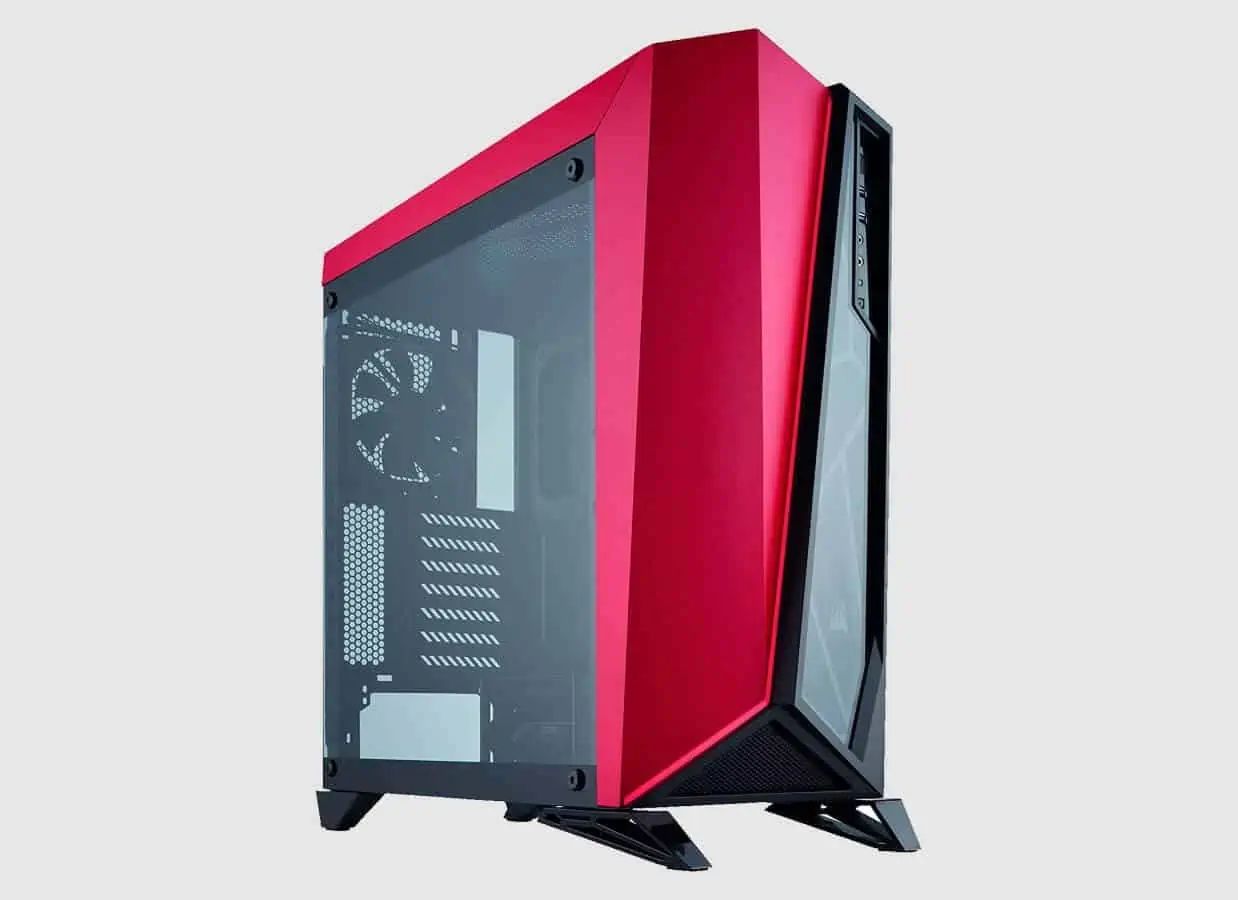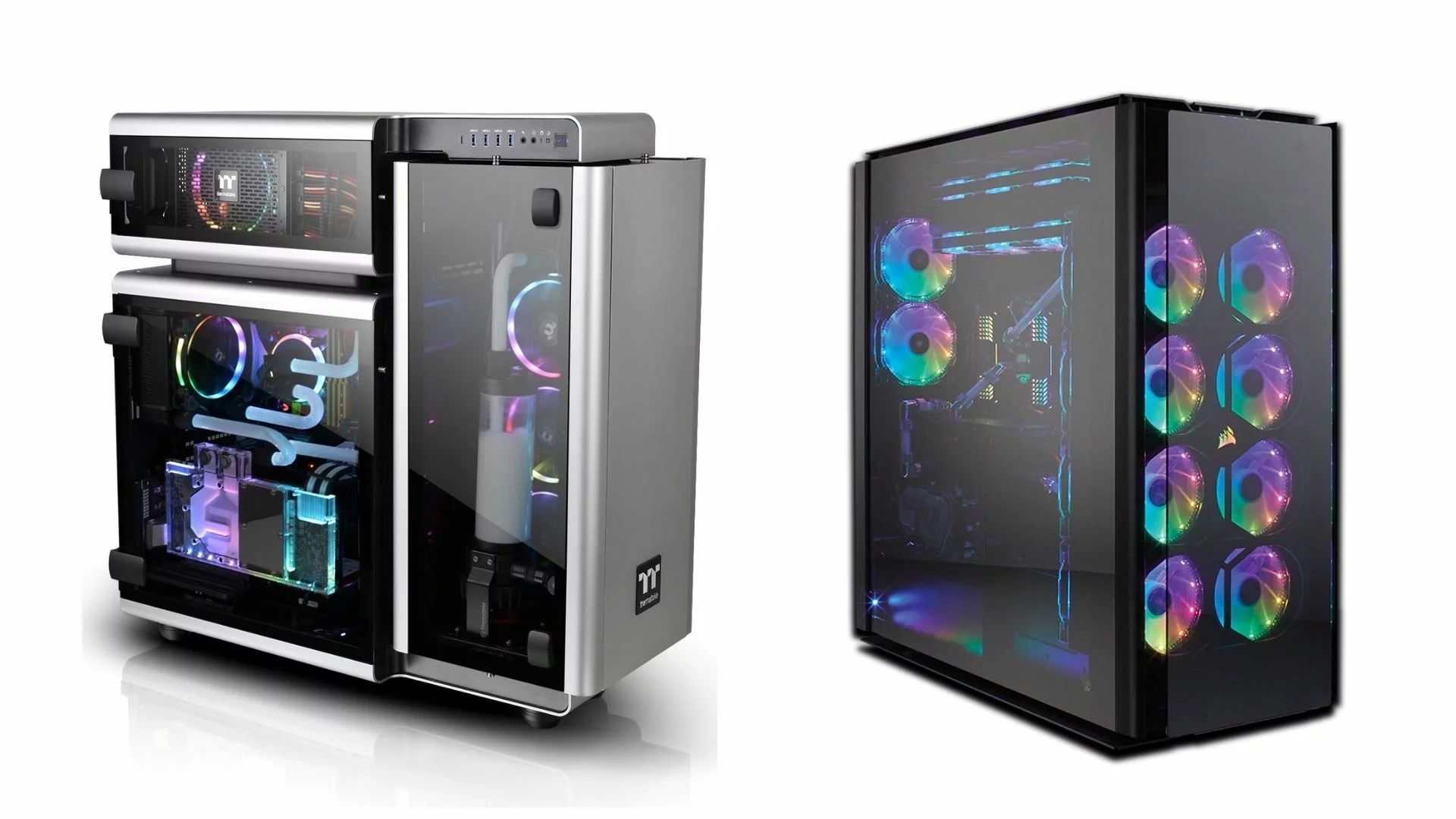Introduction
Welcome to our guide on choosing the right size case fan for your Corsair Carbide case! As an avid gamer or PC enthusiast, you understand the importance of keeping your components cool to ensure optimal performance and longevity. Your choice of case fan size plays a crucial role in maintaining the right airflow and temperature inside your computer case.
The Corsair Carbide series is known for its sleek design, sturdy build quality, and exceptional cooling capabilities. Whether you have the Carbide 200R, 275R, or one of the other models in the highly regarded Corsair Carbide lineup, selecting the appropriate case fan size is essential for maximizing its cooling potential.
In this comprehensive guide, we’ll discuss why case fan size matters, delve into the various factors to consider when choosing a fan size for your Corsair Carbide case, highlight the best case fan sizes for Corsair Carbide, provide a step-by-step guide on installing a case fan, and offer maintenance and troubleshooting tips to keep your system running smoothly.
By the end of this guide, you’ll have a clear understanding of the role of case fans in your Corsair Carbide case and be equipped with the knowledge to make an informed decision when selecting the right size fan for your specific setup. So, let’s dive in and explore what size case fan will best suit your Corsair Carbide case!
Why does case fan size matter?
Case fan size plays a crucial role in maintaining optimal airflow and temperature levels within your Corsair Carbide case. Proper airflow is essential for preventing overheating and ensuring that your components, such as the CPU and graphics card, perform at their best.
When it comes to case fans, size matters for several reasons. First, larger fans generally move more air than smaller fans. This increased airflow helps to dissipate heat more effectively, keeping your components cool. Additionally, larger fans tend to operate at lower RPMs, resulting in quieter operation compared to smaller, faster-spinning fans.
Another factor to consider is the compatibility of the fan size with your Corsair Carbide case. The case is designed to accommodate specific fan sizes, typically ranging from 80mm to 140mm. Choosing the right fan size ensures a proper fit and maximizes the airflow within the case.
Additionally, the number of fans you can install in your Corsair Carbide case may be dependent on the available space and mounting locations. Larger cases often have more mounting positions for fans, allowing for greater flexibility in choosing fan sizes and configurations.
Moreover, the positioning of case fans also impacts their efficiency. By strategically placing fans throughout the case, you can create a balanced airflow that directs cool air towards hot components and expels warm air out of the case. This promotes proper cooling and prevents the formation of hotspots.
Overall, case fan size is an important consideration when building or upgrading your PC. By choosing the right fan size for your Corsair Carbide case, you can ensure optimal cooling performance, quieter operation, and increased longevity for your valuable components.
Understanding the Corsair Carbide case
The Corsair Carbide series is renowned for its exceptional build quality, sleek design, and excellent cooling capabilities. The series offers a range of cases, including the popular Carbide 200R, 275R, and other variations, catering to different needs and preferences of PC enthusiasts and gamers.
One of the key features of the Corsair Carbide cases is their spacious interior design, allowing for easy installation and ample room for high-performance components. With options for ATX, microATX, and mini-ITX motherboards, the Carbide cases offer versatility and compatibility with a wide range of setups.
These cases also feature robust airflow solutions, typically including front, rear, and top fan mounting positions. The strategically placed vents and fan mounts ensure efficient ventilation and promote proper air circulation within the case. Additionally, many Carbide cases come with dust filters to prevent dust accumulation, ensuring cleaner internals and better long-term performance.
The Carbide series also addresses cable management, offering ample space behind the motherboard tray and routing options to keep cables neatly organized. This not only improves the overall aesthetic but also enhances airflow by reducing cable clutter and obstructions.
Build quality is a hallmark of the Corsair Carbide series. The cases are constructed with durable materials, providing sturdiness and a solid foundation for your components. Additionally, most Carbide cases feature tool-free drive bays and easily removable panels, simplifying the installation and future upgrades.
Finally, the Corsair Carbide series embraces a minimalist and sleek design aesthetic. The cases often feature tempered glass side panels, showcasing the interior components and adding a touch of elegance to your setup. Whether you prefer a compact and subtle look or a more striking and attention-grabbing design, there is a Carbide case that meets your style preferences.
When choosing the right size case fan for your Corsair Carbide case, it’s essential to have a solid understanding of its design features, compatibility, and airflow characteristics. This knowledge will guide your decision-making process and ensure that you select the best fan size to maximize cooling performance and complement the overall design of your Corsair Carbide case.
Factors to consider when choosing a case fan size
When selecting the right case fan size for your Corsair Carbide case, there are several important factors to consider. By taking these factors into account, you can ensure optimal cooling performance and compatibility with your specific setup.
1. Compatibility: The first factor to consider is the compatibility of the fan size with your Corsair Carbide case. Check the specifications of your case to determine the supported fan sizes. Common sizes include 80mm, 92mm, 120mm, and 140mm. Ensuring that your chosen fan size fits in the available mounting positions is crucial for a seamless installation.
2. Airflow requirements: Consider the airflow requirements of your components. High-performance CPUs and graphics cards produce more heat and require better cooling. Larger case fans typically move more air and can dissipate heat more effectively. Evaluate the cooling needs of your system to determine whether you need a larger fan or a combination of different fan sizes to achieve optimal cooling.
3. Noise level: Noise is another important consideration when choosing a case fan size. Generally, larger fans tend to operate at lower RPMs, resulting in quieter operation. If noise reduction is a priority for you, opting for a larger fan may be preferable. However, it’s worth noting that there are also smaller fans specifically designed for reduced noise levels, so be sure to consider the fan’s noise rating (expressed in decibels or dB) when making your decision.
4. Case layout and available space: Take into account the layout and available space in your Corsair Carbide case. Larger cases often have more mounting positions and room for larger fans. Smaller cases may be limited in terms of mounting options, requiring smaller fans or a specific configuration of multiple fans. Consider the available space to ensure that your chosen fan size can be accommodated without compromising other components or obstructing necessary cables.
5. Aesthetics: While not directly related to performance, the aesthetic aspect is worth considering. Some PC builders prefer a clean and minimalistic look, while others may want to showcase their components with RGB lighting and colorful fans. Look for fan options that complement your overall build style and enhance the visual appeal of your Corsair Carbide case.
By considering these factors, you can make an informed decision when selecting the right case fan size for your Corsair Carbide case. Remember, the goal is to achieve optimal cooling performance while ensuring compatibility and maintaining the desired aesthetic for your PC build.
The best case fan sizes for Corsair Carbide
Choosing the best case fan size for your Corsair Carbide case depends on various factors, including your cooling requirements, available space, and compatibility. While there isn’t a one-size-fits-all answer, we can recommend some popular and effective fan sizes that are commonly used in Corsair Carbide cases:
1. 120mm fans: The 120mm fan size is a popular choice for its versatility and balanced performance. It provides a good balance between airflow and noise levels, making it suitable for most Corsair Carbide cases. The 120mm fans are readily available, often come with low RPM options, and can fit in the majority of case fan mounting positions in the Carbide series.
2. 140mm fans: For those seeking higher airflow and improved cooling performance, 140mm fans are an excellent choice. These larger fans move more air at lower RPMs, resulting in quieter operation. They are ideal for Corsair Carbide cases with larger mounting positions and can provide enhanced cooling capabilities for high-performance systems.
3. Combination of 120mm and 140mm fans: Another option is to use a combination of 120mm and 140mm fans to achieve a balanced airflow. You can utilize 120mm fans for exhaust or smaller mounting positions and complement them with a 140mm fan mounted as an intake for increased airflow. This combination can provide superior cooling performance while minimizing noise levels.
Ultimately, the best case fan sizes for your Corsair Carbide case will depend on your specific cooling requirements, available space, and personal preferences. It’s recommended to assess your system’s needs and consider the factors mentioned in the previous section to determine the most suitable fan sizes for your setup.
Remember, optimal cooling is achieved through a well-designed airflow system, which can include a mix of different fan sizes strategically placed throughout the case. Experimenting with different combinations can help you find the perfect balance of cooling performance, noise level, and aesthetics for your Corsair Carbide case.
Installing a case fan: Step-by-step guide
Installing a case fan in your Corsair Carbide case is a straightforward process that can greatly improve airflow and cooling performance. Follow these step-by-step instructions to ensure a successful installation:
Step 1: Prepare your workspace: Start by gathering the necessary tools and ensuring a clear workspace. You will need a screwdriver, thermal paste (if replacing a CPU cooler), and any additional cables required for fan connectivity.
Step 2: Identify the mounting positions: Determine the available mounting positions for case fans inside your Corsair Carbide case. Refer to the case’s manual or inspect the interior to locate the fan mounting points. Common positions include the front, rear, top, and side panels of the case.
Step 3: Remove the side panel: If the fan is to be installed on the side panel, carefully remove it by unscrewing the screws or releasing any latches. Set the side panel aside in a safe place.
Step 4: Prepare the case fan: If your case fan comes with mounting brackets or rubber grommets, attach them to the fan according to the manufacturer’s instructions. This will ensure a secure and vibration-free fit.
Step 5: Position the fan: Gently position the fan in the desired mounting position within the Corsair Carbide case. Ensure that the fan is aligned with the mounting holes and that the direction of the airflow is appropriate for your intended setup.
Step 6: Secure the fan: Use the supplied screws or the screws provided by Corsair to attach the fan to the case. Start by loosely securing the screws and then tighten them in a diagonal pattern to maintain even pressure and prevent the fan from tilting or misaligning.
Step 7: Connect the fan: Locate the fan headers on your motherboard or hub. Depending on your setup, connect the fan to the appropriate fan header using the provided cable or an extension cable if needed.
Step 8: Cable management: Ensure that the fan cables are neatly routed and secured using the available cable management options within your Corsair Carbide case. Proper cable management improves airflow and prevents cables from obstructing other components.
Step 9: Reinstall the side panel: If you removed the side panel earlier, carefully align it with the case and secure it back in place by tightening the screws or engaging the latches.
Step 10: Power on and test: Once the fan is installed, power on your PC and verify that the fan is spinning properly. Monitor your system temperatures to ensure that the new fan is providing the desired airflow and cooling improvements.
By following these step-by-step instructions, you can easily install a case fan in your Corsair Carbide case. Remember to refer to the specific instructions provided by Corsair for your model if additional steps or considerations are required.
Maintenance and troubleshooting tips
To ensure optimal performance and longevity of your case fans in the Corsair Carbide case, regular maintenance and troubleshooting are essential. Here are some valuable tips to keep your fans running smoothly:
1. Dust removal: Dust buildup on case fans can hinder airflow and reduce cooling efficiency. Regularly clean your fans by gently wiping them with a soft cloth or by using compressed air to blow away the dust. Additionally, consider using dust filters on intake fans to prevent excessive dust accumulation within the case.
2. Fan speed adjustment: Most Corsair Carbide cases support fan speed adjustment through the motherboard’s BIOS or specialized fan control software. Optimize fan speed settings based on your cooling needs to balance performance and noise level. Higher speeds provide improved cooling, while lower speeds reduce noise output.
3. Cable management: Proper cable management helps to maintain good airflow within the case. Ensure that fan cables are neatly organized and secured to prevent them from interfering with fan blades or restricting airflow. Use cable ties or Velcro straps to bundle and route cables away from fan areas.
4. Fan bearing lubrication: If you notice any clicking or grinding noises coming from your case fans, it could indicate a lack of lubrication in the fan bearings. In such cases, you may need to access the fan bearing and apply a small amount of lubricating oil as recommended by the fan manufacturer.
5. Fan replacement: Over time, case fans may wear out, leading to reduced performance or complete failure. If a fan becomes noisy or stops spinning, it’s advisable to replace it promptly to maintain optimal cooling. Refer to the Corsair Carbide case manual or consult online resources for guidance on proper fan replacement procedures.
6. Monitoring software: Utilize monitoring software to keep track of your system’s temperatures, fan speeds, and overall performance. This information can help identify potential issues with your case fans and allow you to take appropriate action before any significant damage occurs.
7. System maintenance: In addition to case fan maintenance, regularly clean and maintain other components in your system, such as CPU coolers and graphics cards. Proper maintenance of these components ensures efficient heat dissipation, which takes some of the workload off your case fans.
8. Troubleshooting: If you encounter any issues with your case fans, such as improper operation, noisy operation, or failure to spin, consult troubleshooting guides provided by Corsair or seek assistance from reputable online forums or support channels. The Corsair community is often active and can offer helpful solutions.
By following these maintenance and troubleshooting tips, you can extend the lifespan and optimize the performance of your case fans in your Corsair Carbide case. Regular care and attention to your system’s cooling components will help ensure that your PC runs smoothly and maintains optimal temperature levels.
Conclusion
Choosing the right case fan size for your Corsair Carbide case is crucial for maintaining optimal airflow, temperature levels, and overall system performance. By considering compatibility, airflow requirements, noise levels, case layout, and aesthetic preferences, you can make an informed decision that ensures effective cooling and enhances your PC building experience.
The Corsair Carbide series offers a range of high-quality cases that prioritize airflow, cable management, and visual appeal. Understanding the design and features of your specific Corsair Carbide case is essential in selecting the fan size that best suits your needs and compatibility requirements.
Installing a case fan in your Corsair Carbide case can be accomplished using a simple step-by-step guide, ensuring proper airflow and cooling. Regular maintenance, such as dust removal, fan speed adjustment, and cable management, will help prolong the lifespan of your case fans and maintain optimal cooling performance.
In the event of any issues or noisy operation, troubleshooting your case fans and seeking expert advice or assistance is recommended to ensure a smooth and problem-free system.
Ultimately, selecting the right case fan size, maintaining regular maintenance, and addressing any troubleshooting issues will help you get the most out of your Corsair Carbide case and create an efficient and reliable PC setup. So, take the time to research and evaluate your cooling needs, and choose the best case fan size to maximize the performance and longevity of your Corsair Carbide case.







